The Pragmatic Engineer 2025 Survey: What’s in your tech stack?
Hi – this is Gergely with the monthly, free issue of the Pragmatic Engineer Newsletter. In every issue, I cover challenges at Big Tech and startups through the lens of senior engineers and engineering leaders. If you’ve been forwarded this email, you can subscribe here. Many subscribers expense this newsletter to their learning and development budget. If you have such a budget, here’san email you could send to your manager. The Pragmatic Engineer 2025 Survey: What’s in your tech stack?Which tools do software engineers use for backend development, frontend, infrastructure, AI tooling, and more, today? Reader survey, with feedback and analysis, based on 3,000+ responsesDuring April and May, we asked readers of this newsletter about the tools you use in your stack, and your opinions of them. In today’s article, the results are in. We received more than 3,000 responses to the survey, and after summarily purging the small number of duplicated, automated, and spam ones, there were a total of 2,997 from tech professionals and others. It is this first-hand, primary source information from across the tech industry that forms the basis of the findings in this article. We’d like to say thanks to everyone who’s provided data; you’ve contributed to what is an exclusive – and hopefully also an enhanced – understanding of the state of tooling, today, based on the highest-ever number of responses to a Pragmatic Engineer survey. This issue covers:
Before we begin: last year, we ran a survey that focused on just AI tooling. Check out the results and analysis in AI tooling for software engineers in 2024: reality check. The bottom of this article could be cut off in some email clients. Read the full article uninterrupted, online. 1. DemographicsLet’s begin this year’s survey analysis by stating what might be the resoundingly obvious: most people who filled in this tech stack survey are software engineers. Most respondents have been professionals for between 5 and 20 years, and there’s also plenty of seasoned practitioners who have been doing it longer than that, and a similar number of junior folks at the opposite end of the experience spectrum. There’s a roughly even split of people working at tiny, small, mid-sized, large, and huge companies: We asked you what the primary focus of your day-to-day work is, and unsurprisingly, it’s the backend more than anything else: Based on the data, the “median respondent” in these results is a senior software engineer with 6-10 years of experience, who’s working on the backend stack at a company of any size – from tiny startup to tech giant. 2. AI toolsAI tools are surging in popularity, which is one reason why we’re covering more AI engineering-related topics than ever in The Pragmatic Engineer. Most respondents mention AI tools. 85% (2,555) mention at least one in the survey. A total of 2,555 people cite at least one AI tool, while 130 say they don’t use them, and 312 don’t mention AI tooling at all. Interestingly, four percent (130 people) explicitly do not use any AI tools, either because their workplace forbids it, or they don’t find them helpful, or because of ethical concerns. Most popular AI toolsThe most-mentioned tools are: These results are a little surprising to me for two reasons:
Here is how mentions compare between last year’s AI tooling survey and this year’s reader survey: AI search engine Perplexity is mentioned about as often as it was last year, with around 4% of respondents using it. As a note, annual subscribers of The Pragmatic Engineer get a year-long free trial of Perplexity. They don’t pay me for this endorsement: I set up this collaboration with Perplexity because I’ve been impressed with it, and am happy to help others discover this tool. We previously covered how Perplexity and Kagi are taking on Google. AI tools by company sizeHow are the tools mentioned above actually used in workplaces of different sizes? Perplexity aside, the results are very interesting: Interesting findings from mentions of AI tools by company size: The larger the company, the more likely it is that devs use GitHub Copilot. With the exception of “huge” (10,000+ people) places, the larger the company, the more that GitHub Copilot adoption is reported. If you want to use GitHub Copilot day-to-day, your best bet might be to join a large company! The smaller the company, it’s more likely that people use Cursor, Zed, or another AI IDE. More devs in smaller workplaces mention Cursor, ChatGPT, Claude, and Zed – likely instead of Copilot. This trend is also present with the likes of Windsurf, Claude Code, and other alternative IDEs. I wonder if this might be because smaller startups have laxer policies for AI tool usage (i.e: “use whatever you want”), while larger companies use tools supplied by enterprise vendors. Nowhere is better at selling enterprise contracts than Microsoft is (GitHub). The smaller the company, the more likely that ChatGP and Claude are used. This was a bit of a surprising finding, too. As above, one possibility is that larger companies are stricter about access to AI tools, and so maybe devs have just the in-house AI tool to use. For example, at Amazon a developer told me that ChatGPT and other third-party LLMs are banned, and only LLMs like Amazon Q, and the internally hosted Claude, are allowed. Gemini is the only tool for which company size seems irrelevant. Gemini is mentioned by only around 8% of respondents from the largest of companies (10,000+ people) to the smallest (50 or less). This is very curious: why are some models popular with small companies, but not Google’s? My two guesses are:
The bigger the company, the more likely it is that devs only use one AI tool. Among all companies, the “average” respondent mentions more than one tool, except at huge places with workforces of 10,000+. This suggests the biggest companies might have the strictest policies on use of tools and allow only one. In the podcast episode with Shopify’s Head of Engineering, Farhan Thawar, he shared how Shopify used to have this policy, and recently changed it in order to experiment with more AI tools. Other AI toolsSome lower-profile AI tools are also mentioned by respondents in the full results. In descending order by number of mentions: The tools listed:
A few interesting observations from this list and the responses: Most respondents who mention vibe coding tools aren’t engineers. Around two thirds of those who mention Vercel v0, Bolt.new, and Lovable, are founders, director+ folks, or engineering leads. Of the remaining third, half are staff+ engineers, and the rest software engineers. This suggests that vibe coding tools might be more helpful for less hands-on folks who want to prototype something, perhaps to show to their engineering team. Devin is not popular with developers – but Windsurf is, so is this why Cognition is buying Windsurf? It was reported yesterday (14 July), that Cognition, the company behind Devin, is acquiring Windsurf. The story so far is a bit messy:
The deal is unusual but does fit a trend of Big Tech shunning normal-style acquisitions in order to avoid disruptive governmental antitrust investigations. Google gets the people it wants, without a product it doesn’t want (Windsurf), and leaves the company technically operational. But Windsurf is now effectively a “zombie” company, with some staff and funding left, but potentially a declining userbase, after the founding team all jumped ship. Following that, Cognition stepped in to acquire Windsurf. Our survey shows that Devin has about 10% of the usage as Windsurf has respondents (and 1% of usage than Cursor has with devs), so could the creator of Devin buying Windsurf be Cognition’s attempt to gain more developer traction? Cognition was founded in 2023, raised $200M to date, and was valued close to $4B in their last funding round. Devin has been positioned for founders as a way to replace developers with an “AI Engineer” that costs approximately $500/month. We previously analyzed why Devin likely needed to position itself like this to gain market share. At the same time, it was revealed Devin faked its launch demo by pretending to “complete real jobs on Upwork” which it didn’t do. The company has not yet corrected its inaccurate statements. My two cents is that a company like Cognition cannot have it both ways: it cannot market itself as an “AI software engineer” that replaces devs, but also wants developers to use this tool. It should choose one direction, though my sense is that Cognition will keep marketing itself as a replacement for human developers. 3. Most used, most-loved programming languagesMost-used languagesThe most frequently mentioned programming languages: TypeScript being the most-used is less of a surprise these days: it’s a type-safe language that can be deployed on both the front and backend. Engineering teams at Linear and Bluesky share that this is why they use it. Python seems to me like it’s having something of a renaissance. Not only is it an expressive, powerful language, but it’s the “shared language of choice” among software engineers, data scientists, and ML/AI engineers. Swift has clearly become the default language choice for those building native iOS applications, with 6x as many mentions than Objective C. It’s been 11 years since the language was publicly announced in 2014, and my guess is that most iOS engineers working with Objective C are likely doing so on legacy codebases, where a rewrite is not worth the effort. Most-loved languagesGathering this data was a little tricky because answers are shared with us in “freeform,” meaning we have to interpret each response, such as “I don’t really like JavaScript: I could use Python instead.” In this example sentence, “JavaScript” is disliked, and “Python” is loved. We did our best to count all positive and negative mentions. Here’s the top 10: This table is pretty predictable, except perhaps for how much love there is for Ruby on Rails. The language is the 5th most popular in usage, and the 3rd most loved one. Elixir being the 10th most loved language, despite being the 16th most used one, suggests that devs using it really appreciate how well it works. One interesting finding is that no language has a “highly negative” rating, meaning that none have received significantly more “negative” mentions than positive ones. To me, this suggests that popular languages these days are all pretty good: after all, a poorly designed language won’t win much adoption. 4. Most-loved and disliked toolsWe gathered details on the most-loved and most disliked tools, similarly to what we did for programming languages. We counted all positive and negative mentions, and then deducted the negatives from the positives: Most-loved toolsThe presence of so many IDes and text editors on this list, such as VS Code, JetBrains, Cursor, Neovim, Vim, Zed, and Emacs, indicates that engineers spend a good part of their days inside the editor. JetBrains products get plenty of love by garnering nearly as many mentions as VS Code, which shows JetBrains know what they’re doing. Cursor being the third-most loved product is a standout achievement, especially because the product is barely two years old. We recently did a deepdive into how Cursor is built, with cofounder Sualeh Asif. Linear is mentioned positively mostly in comparison to JIRA (see below), for being a snappier experience, and more pleasant to use than Atlassian’s flagship product. We also did a deepdive Inside Linear’s engineering culture, and a podcast episode on How Linear moves so fast. Expo is the only framework to make it to this “most-loved” list. It is a cross-platform mobile development library and we previously did a deepdive on Expo, covering plenty of details. Most-disliked toolsJIRA is by far the most-disliked tool among respondents, with more negative mentions than the next four tools combined! For example, many mentions of Linear were in the context of devs wishing they could use this more lightweight tool instead of JIRA. Chief complaints about JIRA are that it’s slow, complex, and cumbersome. Linear is the most frequently-mentioned replacement for JIRA. Slack is often mentioned as the tool devs currently using Microsoft Teams say they wish they could use, instead. Coda (a document collaboration platform) is often mentioned as what devs would like to replace Confluence (Atlassian’s team collaboration and knowledge management platform) with. Reasons for disliking toolsFactors which developers mention for disliking something: There are some obvious themes in why devs dislike tools:
5. IDEs and TerminalsIDEsThe most popular by number of mentions: Cursor being the second most-used IDE is very surprising, given it’s been around for only two years! JetBrains has seven IDEs in the above list: IntelliJ (tailored for Kotlin and Java), Rider (.NET), Webstorm (web), PHPStorm (PHP), Goland (Go), Datagrip (data), and RubyMine (Ruby). Additionally, they also have CLion (C/C++) and RustRover (Rust), which were mentioned 10 and 8 times, respectively. If we combine the two Microsoft IDE mentions (VS Code and Visual Studio) and these seven IntelliJ IDEs, this is the split: TerminalsTerminals mentioned:
6. Version control, CI/CDWhich tools do devs use for version control, continuous integration (CI), and continuous deployment (CD)? Here’s what the survey says: Version control78% of respondents mention some kind of version control – almost all being a variant of Git. Here is the split of vendor mentions: In the “Other” category, the mentions are:
If we zoom into Git vendors, we see: GitLab and BitBucket are alive and well – and this survey is a reminder of that. For some reason, I assumed GitHub would absolutely dominate this category, and that it would have a market share of close to 90%. And this is potentially true for hobby projects, but most respondents share their work stack. In the Stack Overflow 2022 survey, we saw similar results among professional developers: GitLab’s self-hosted offering still seems popular. Around 10% of GitLab mentions are for GitLab’s self-hosted offering, and it seems to be the last major Git provider offering self hosting. CI/CDIn the category of continuous integration and continuous deployment, the results are: GitHub Actions being the most-used continuous integration (CI) tool by so much is somewhat surprising. GitHub Actions launched as generally available (GA) in 2019, but many other vendors in this list have been around much longer. That GitLab CI and Bitbucket Pipelines are popular is less surprising because both are offerings from GitHub, GitLab, and Atlassian (the vendor behind Bitbucket). It seems that many customers prefer to use the CI/CD offering from the same company as they use for version control. Vendors mentioned:
Honorable mentions:
In-house solutions are also a thing for CI/CD. Many of the Jenkins mentions refer to companies running their own Jenkins setup. Also, larger companies like Google, Meta, and Uber, have custom-build CI/CD systems, and often use custom feature flag systems that might be integrated with CI/CD systems, in-house experimentation stack, and lots of custom infrastructure, in general. 7. Cloud providers, PaaS, IaaSHere is how backend providers lines up, based on survey responses: Zooming in on mentions of the three largest cloud providers (AWS, Azure, GCP): Interestingly, VC firm Coatue estimates that total revenue in the cloud market splits like this:
The difference in numbers suggests our survey results are likely to overrepresent AWS and underrepresent Azure. I’d speculate that Azure is more popular at “traditional” companies, while Pragmatic Engineer readers tend toward Big Tech workplaces and startups. Looking deeper, here are smaller cloud providers and platform-as-a-service (PaaS), or infrastructure-as-a-service (IaaS), mentions: Vercel is the clear leader in infrastructure choice beyond the “Big 3”. By comparison, Vercel has one fifth of the mentions that GCP gets (100 vs 502). Details about other providers:
TakeawaysThis tech stack survey has been the biggest piece of reader-based research to date by the Pragmatic Engineer, and I hope you find the results interesting! We certainly do. Here are my biggest takeaways: Us devs are not shy to try out new tools in innovative areas. AI tools are a model example of how quickly things can change in just a year. Twelve months ago, GitHub Copilot seemed to dominate this category, but since then, smaller startups have gained mindshare and market share. This explains why VC investors are pouring so much money into areas seen as innovative: it’s still easy enough to have developers try out new tools, and perhaps stick with them! In 2025, AI dev tools are the hotbed of innovation, and in the AI tooling category, companies founded only 2-3 years ago can already be leaders, like Cursor is – at least for now. In more established categories, change is slower. In areas like programming languages and CI/CD systems – where each language has been around 10+ years or more – it’s harder for new startups to gain customers and make the kind of “splash” Cursor has. JetBrains taking on Microsoft in IDEs is a remarkable highlight. Microsoft is a Big Tech giant with developer tools in its DNA: it’s been a major focus of the company for 50 years. And yet, JetBrains keeps being a strong competitor to it in IDEs, and is one of the most loved tools – right behind VS Code. Do devs dislike JIRA, or just hate being micromanaged? For as long as I’ve been a dev, I’ve seen fellow developers getting mad at JIRA because it’s slow, clunky, not customizable enough, etc. Another big reason is that we just don’t like being pushed to use it! That “push” has always come from product managers, project managers, or some other kind of manager. But I wonder if the root problem is really with JIRA itself, or whether any project management tool idolized by managers would encounter the same push back? It is rare to find a dev who loves creating and updating tickets, and writing documentation. Those who do tend to develop into PMs or TPMs (Technical Program Managers), and do more of “higher-level”, organizational work, and less of the coding. Perhaps this in turn makes them biased to something like JIRA? We hope you get some value from this article about tools devs use in 2025. We intend to follow up with some more findings from this survey in a few weeks’ time. In the meantime, please leave a comment below if you have any thoughts about the state of tooling today. Thanks again to everyone who took the time to be part of this survey. You’re on the free list for The Pragmatic Engineer. For the full experience, become a paying subscriber. Many readers expense this newsletter within their company’s training/learning/development budget. If you have such a budget, here’s an email you could send to your manager. This post is public, so feel free to share and forward it. If you enjoyed this post, you might enjoy my book, The Software Engineer's Guidebook. Here is what Tanya Reilly, senior principal engineer and author of The Staff Engineer's Path said about it:
|

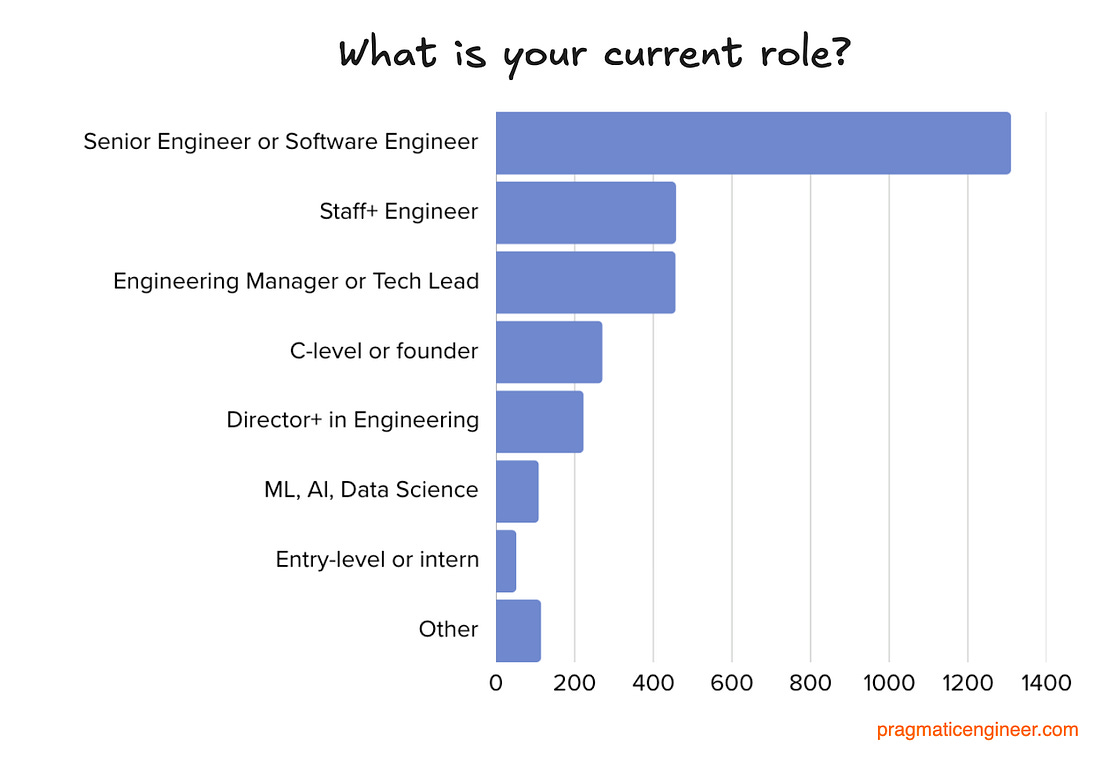





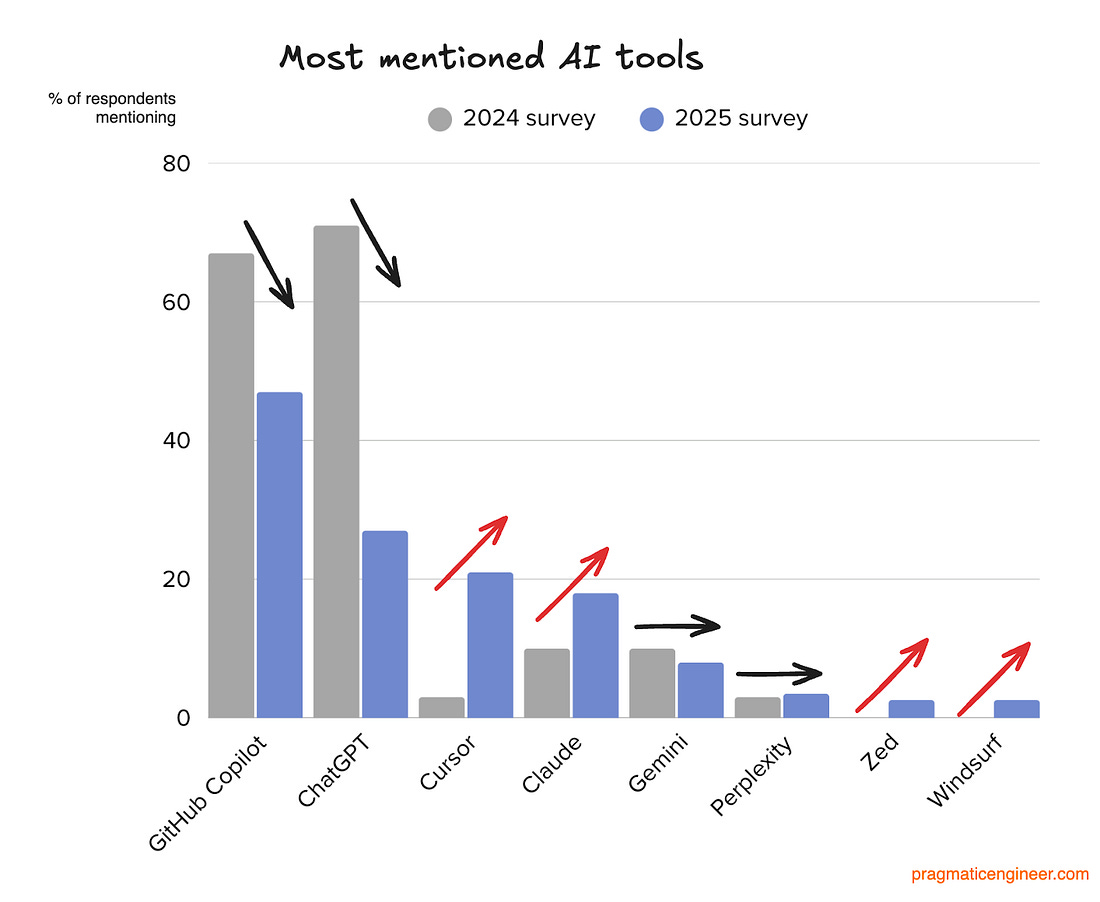
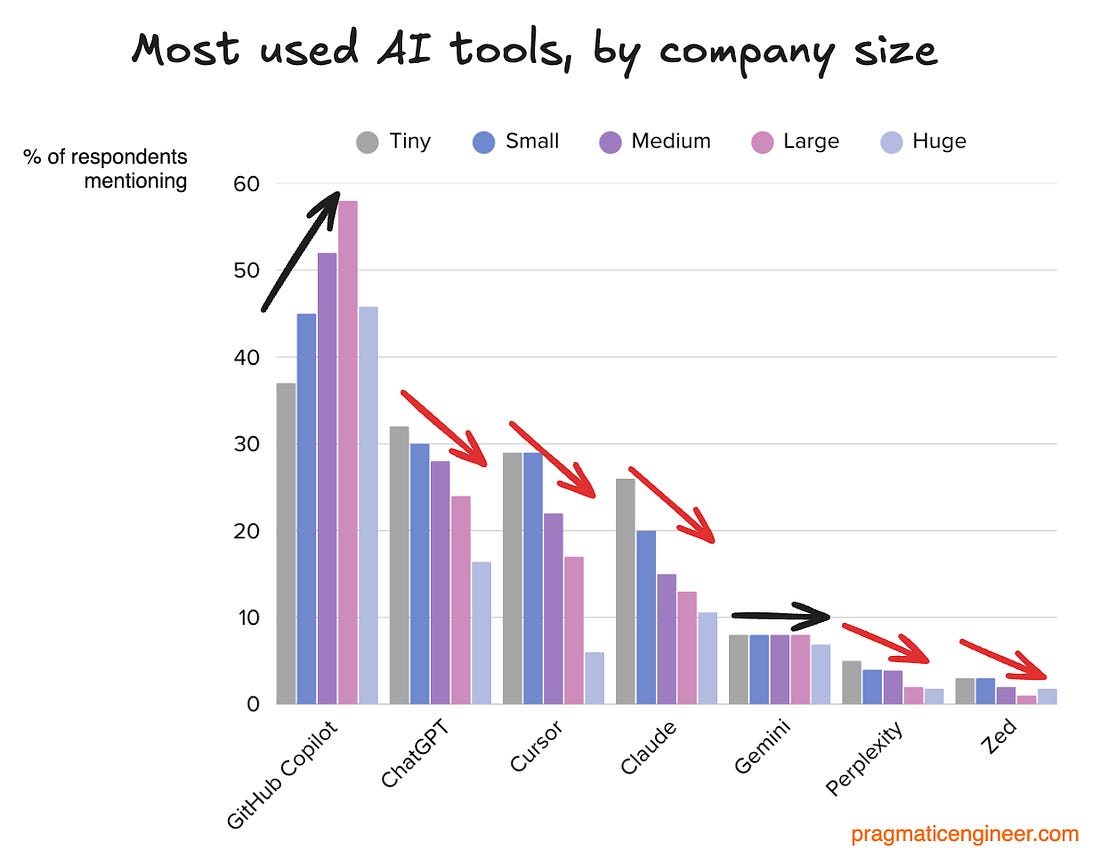
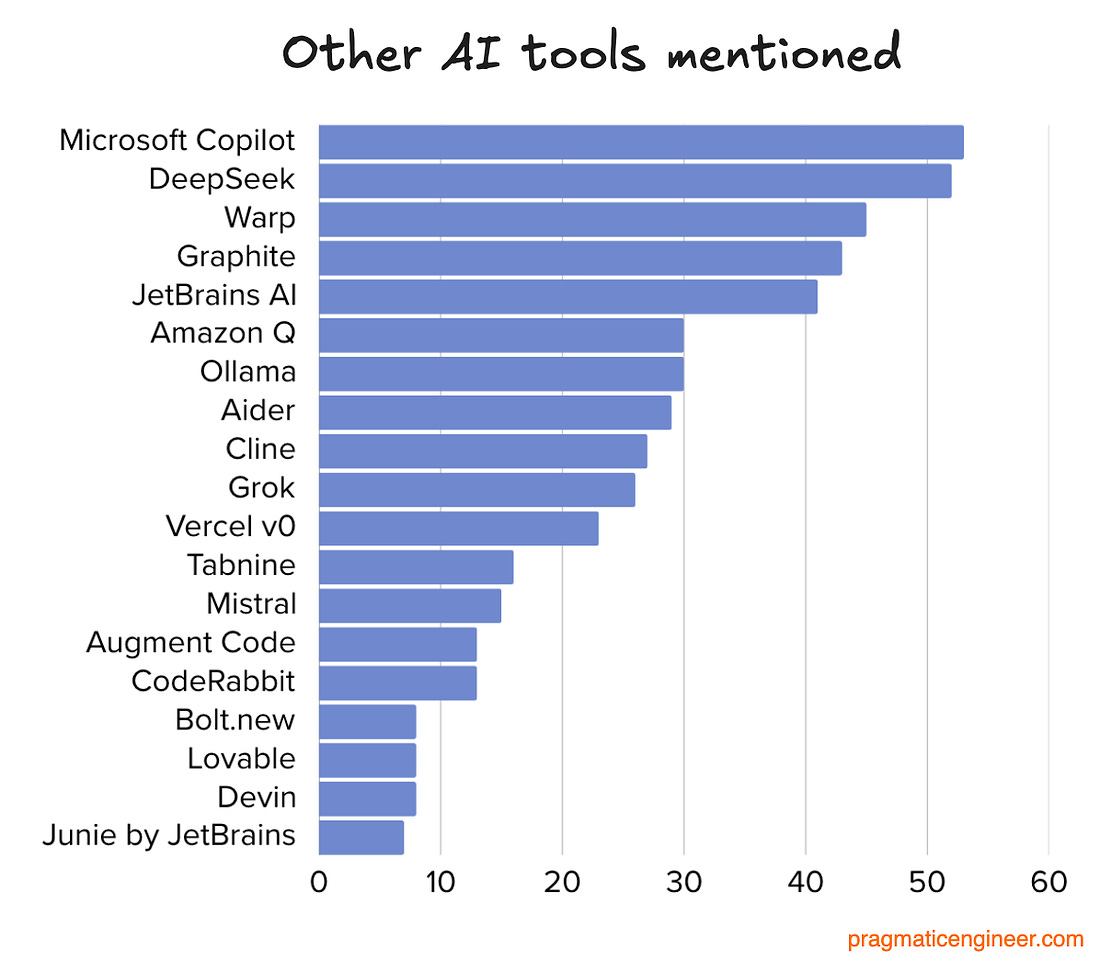








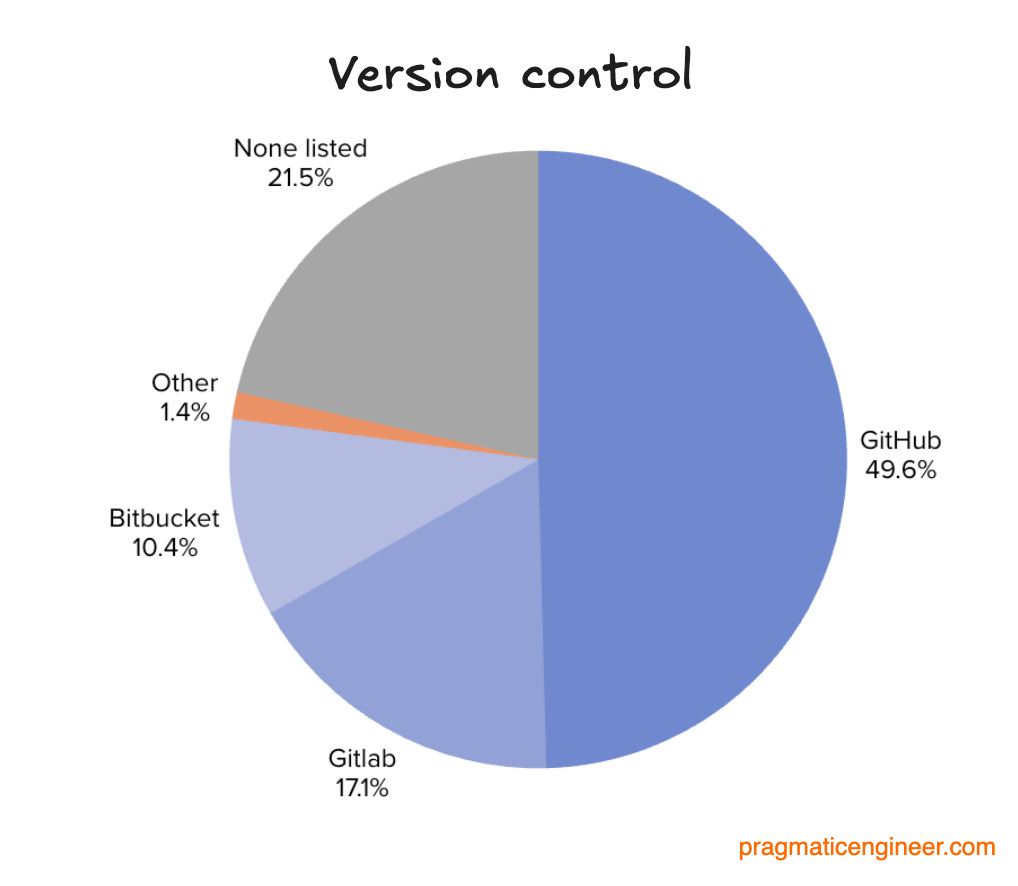




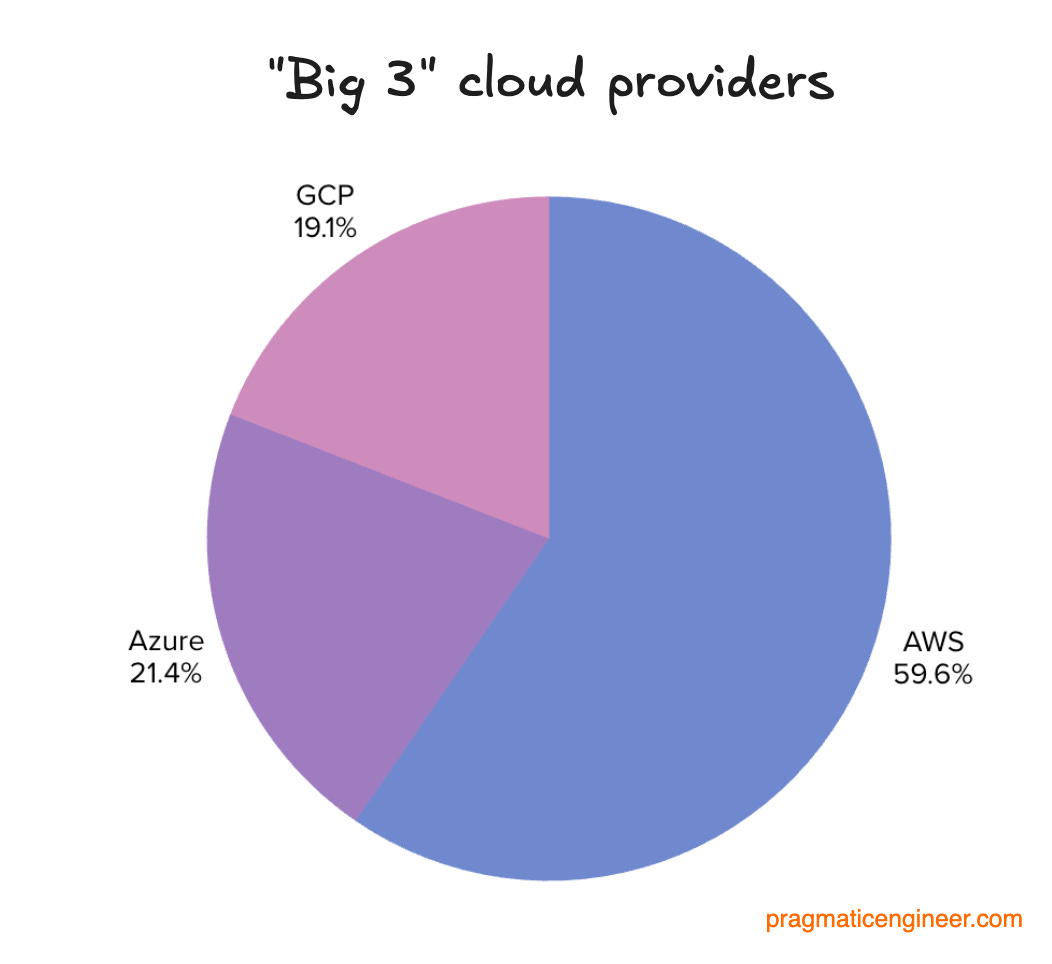


Comments
Post a Comment